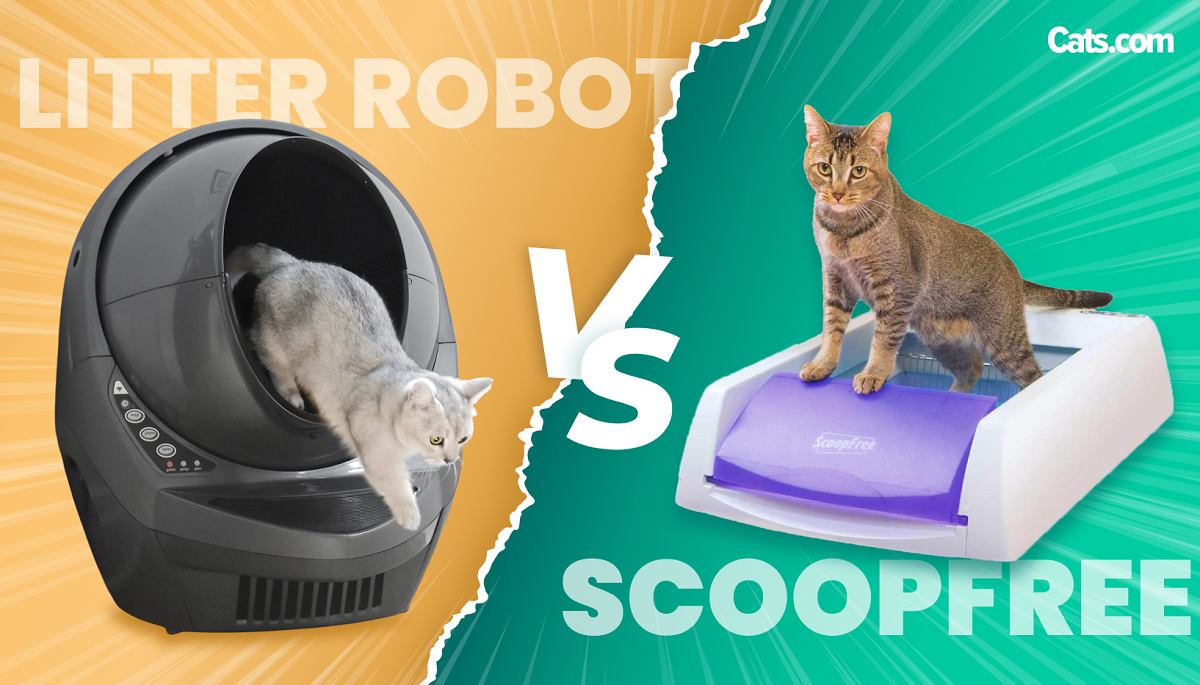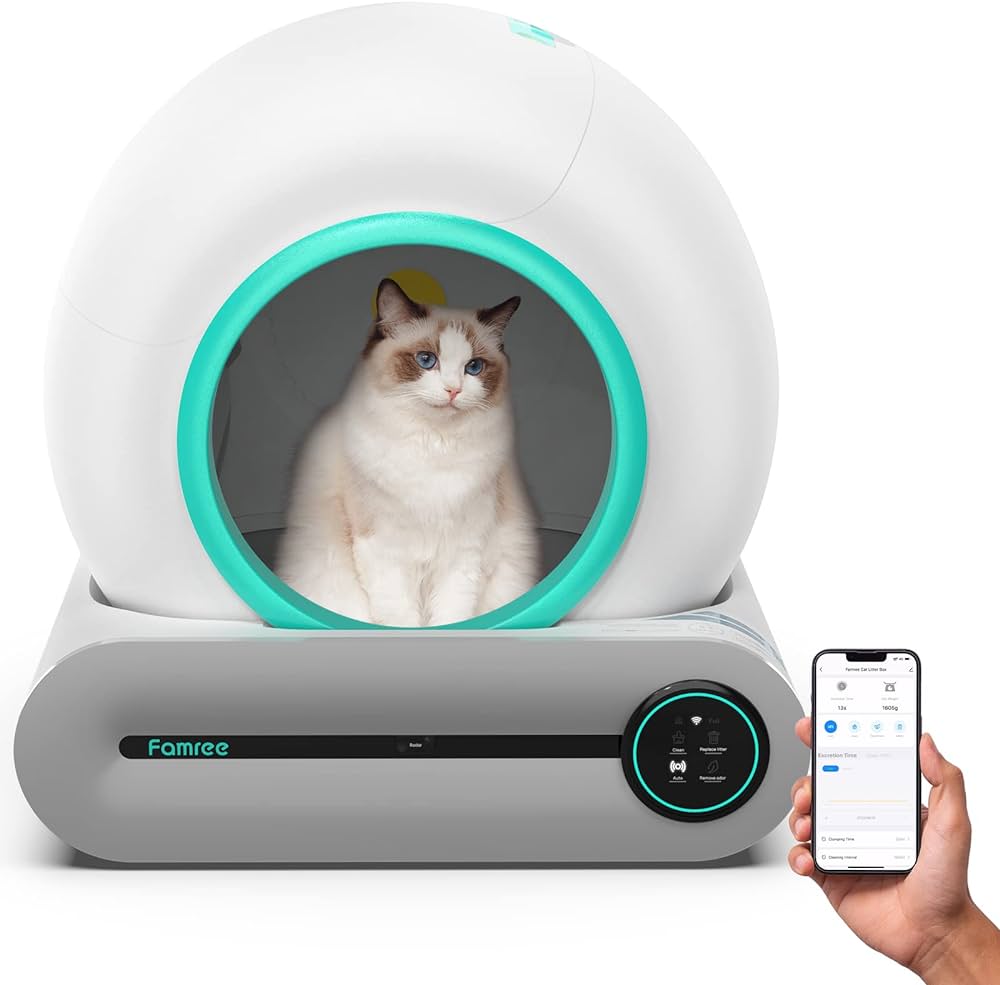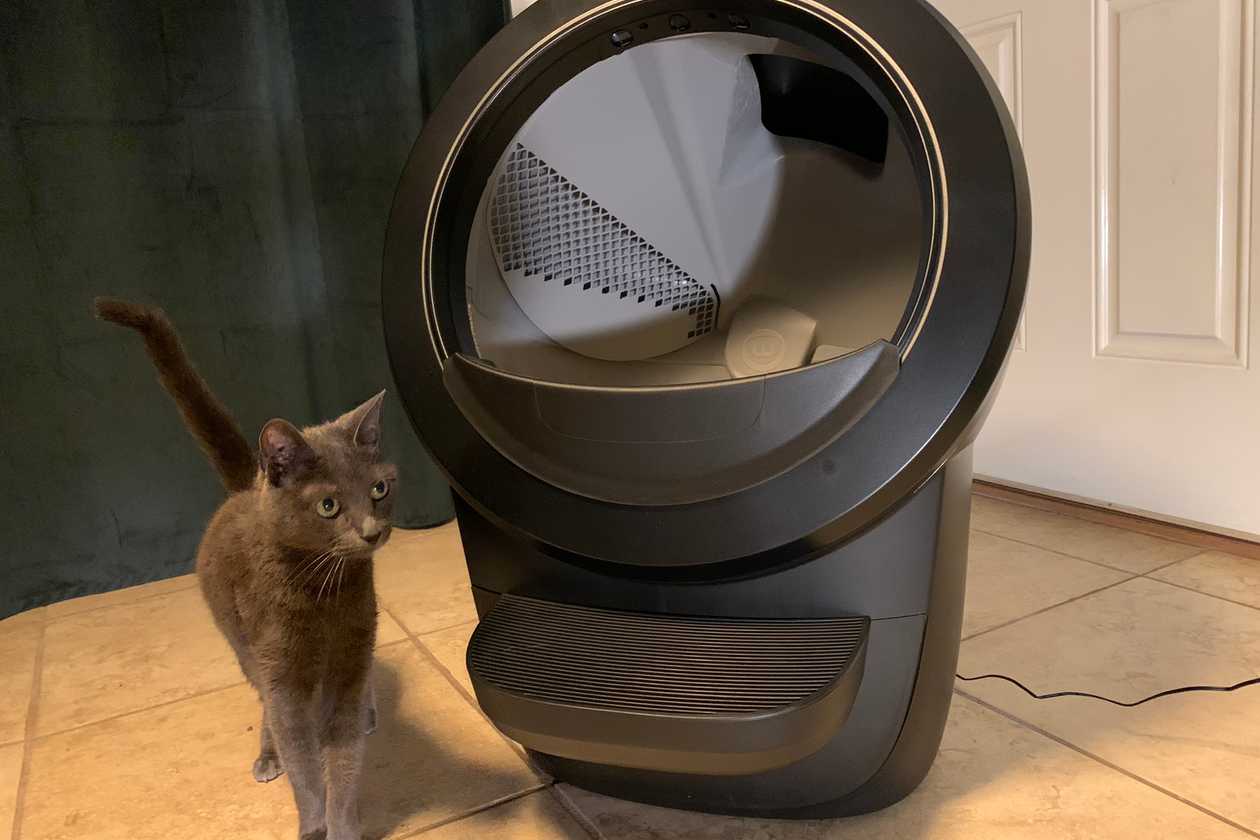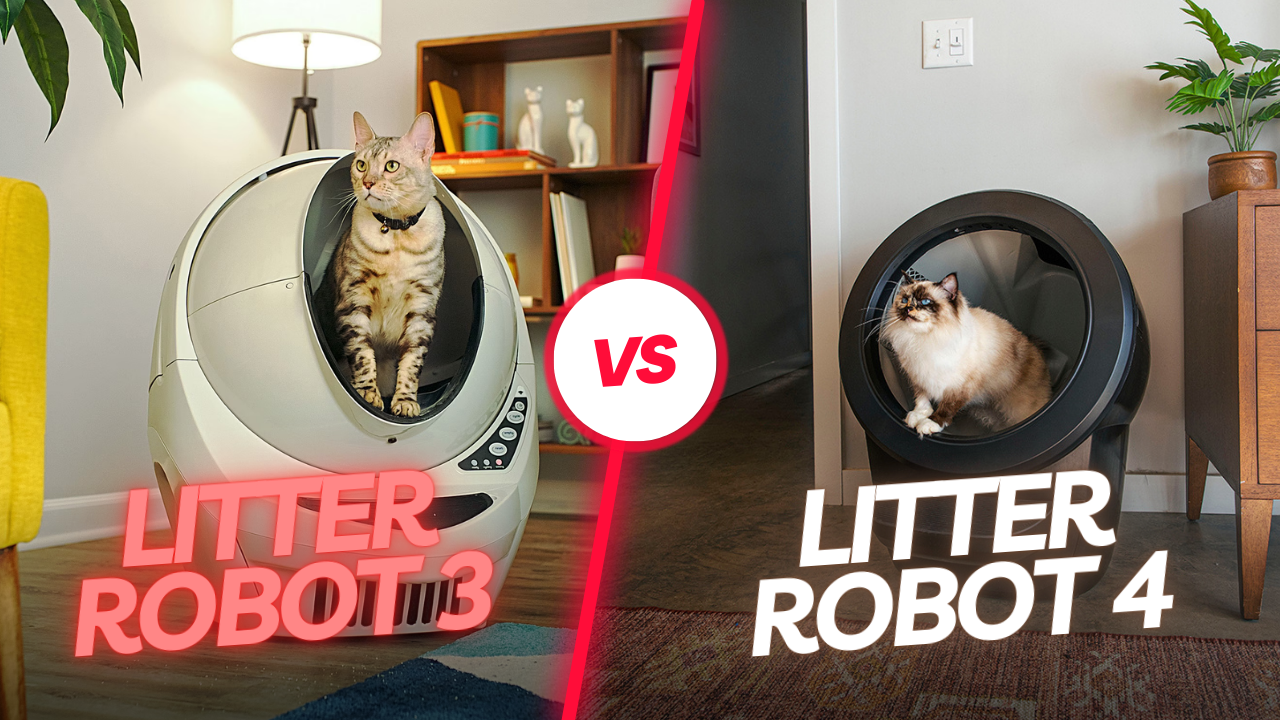Cat litter robots automatically sift and remove waste from the litter box. They use sensors and a rotating mechanism to separate clumps from clean litter.
Embracing modern pet care technology, cat litter robots have revolutionized the way cat owners manage their furry friends’ waste. These automated devices offer convenience and hygiene, simplifying one of the less desirable aspects of cat ownership. Using advanced sensors, the litter robot detects when a cat has used the box and initiates a cleaning cycle, usually after a set delay to allow the litter to clump.
The waste is then isolated, often into a sealed compartment, reducing odors and the frequency of manual litter box cleaning. This self-cleaning feature not only contributes to a cleaner home but also ensures that the litter box is consistently fresh for the cat, enhancing overall pet well-being.
Evolution Of Cat Litter Boxes
The journey of cat litter boxes has been a remarkable one. As cat ownership increased, so did the need for an effective way to manage feline waste. Traditional litter boxes required daily scooping, which was not convenient for many cat owners. Innovation in this field focused on making litter boxes cleaner, more efficient, and less labor-intensive. Today, cat litter robots represent the cutting-edge of these efforts, transforming the way we think about cat care and hygiene.
From Manual To Automatic
Cat litter box design has evolved significantly. Here’s a snapshot of the change:
- Manual Litter Boxes: Simple plastic trays filled with absorbent litter. Scooping was a daily chore.
- Covered Litter Boxes: Introduced a cover for added privacy and to contain odors.
- Sifting Litter Boxes: Integrated a sieve-like layer to help separate waste without scooping.
- Automatic Self-Cleaning Litter Boxes: Use sensors and mechanical components to clean the box after each use.
Innovations In Feline Waste Management
In the realm of feline waste management, tech has been a game-changer. Check out some innovations:
| Feature | Benefit |
|---|---|
| Sensors | Detect the cat’s presence and start the cleaning cycle after use. |
| Automated Rakes | Sweep waste into a sealed compartment, reducing odors and the need to scoop. |
| Wifi Connectivity | Control and monitor the box remotely via smartphones. |
| Health Monitoring | Track visit frequency and waste quantity, alerting to potential health issues. |
The Anatomy Of A Cat Litter Robot
Exploring the magic behind cat litter robots uncovers a world of tech, design, and features. These devices offer simplicity for pet parents. The anatomy of a modern cat litter robot reflects a blend of smart engineering and keen understanding of our feline friends.
H3: Components and MaterialsComponents And Materials
Cat litter robots come to life through various parts. Each component plays a vital role. Here is a closer look:
- Waste Drawer: Hidden at the base, it catches disposed litter.
- Globe: A spherical chamber where cats do their business.
- Clean Litter Chamber: Sifts and saves clean litter during rotation.
- Motor: Powers the unit’s automatic sifting process.
- Sensors: Detect a cat’s presence and ensure clean cycles run safely.
- Control Panel: Allows manual operation and customization.
- Power Supply: Energizes the system, much like a heartbeat.
Materials typically include high-grade plastics. These are durable, lite, and easy to clean.
H3: Design Features for Cat ComfortDesign Features For Cat Comfort
Comfort for cats is paramount in the design of litter robots. Noteworthy features include:
- Quiet Motor: Minimally invasive, it won’t spook your pet.
- Ergonomic Entry: Provides easy access for cats of all sizes.
- Spacious Globe: Offers ample room for cats to turn and dig.
- Soft Lighting: A gentle night light aids nocturnal visits.
- Ventilation System: Keeps the area fresh and odor-free.
Robots embrace a feline-friendly approach to design. They ensure a stress-free toilet experience.
The Science Behind The Automation
Cat Litter Robots are modern solutions for a pet parent’s daily task. These devices use smart technology to keep the litter box clean. The science behind this automation includes sensors and a methodical cleaning cycle. Let’s dive into how these aspects work.
Sensors And Detection Mechanisms
Cat Litter Robots come equipped with advanced sensors. These sensors detect a cat’s presence. Once the cat exits, the robot counts down to start the cleaning process. Detection systems ensure safety and precision.
- Weight sensors gauge when a cat enters and leaves.
- Infrared sensors provide additional safety checks.
- Timer settings allow the robot to wait before cleaning.
Cleaning Cycle: Rotation And Sifting
The cleaning cycle is a marvel in the robot’s function. Once the cat leaves, the robot begins its cycle. It consists of rotating the globe and sifting clumps from clean litter.
- The globe rotates, sieving the litter through a filter.
- Waste clumps separate into a lined compartment.
- Clean litter is returned to the main area.
This automated process keeps the litter box fresh and ready for the next use.

Credit: cats.com
Maintenance And Upkeep
Maintaining a Cat Litter Robot keeps it running smoothly. It involves simple tasks. Owners should follow a routine to ensure their robot functions well. This section will dive into maintenance and troubleshooting.
Regular Cleaning Procedures
Regular cleaning is vital for a Cat Litter Robot. It ensures hygiene and longevity. Here’s a quick guide to keeping your device clean:
- Empty the waste drawer when indicated.
- Clean the waste drawer weekly.
- Use a mild detergent for the drawer and base.
- Wipe sensors and charging contacts with a soft cloth.
- Check and clean the litter bed area regularly.
Litter should be at the recommended level. Not too high or too low. This could affect the sensor.
Troubleshooting Common Issues
Sometimes your Cat Litter Robot might face issues. Do not worry. Here are easy steps to fix them:
- If the robot stops mid-cycle, reset it.
- Ensure the unit is level if it’s unresponsive.
- Clean sensors if they become blocked with litter.
- Check for clumps stuck to the waste unit.
- Call customer service for unresolved problems.
A simple reset or sensor cleaning often does the trick. Refer to the manual for specific troubleshooting steps.
Remember, regular upkeep will help avoid most issues. The Cat Litter Robot is designed to make life with your furry friend easier.
Comparing Litter Robots With Traditional Litter Boxes
Cat parents often face a choice: stick with a traditional litter box or upgrade to a modern litter robot. A litter robot is a self-cleaning litter box that automates much of the cleaning process. Traditional boxes require manual scooping. This section evaluates both, helping you decide the best option for you and your feline friend.
Pros And Cons For Pet Owners
Knowing the pros and cons of litter robots and traditional boxes is crucial for decision-making. Let’s delve into the benefits and drawbacks:
| Litter Robots | Traditional Litter Boxes |
|---|---|
|
|
Assessing Cost Versus Convenience
Price and ease play big roles in choosing between litter solutions. A litter robot comes with a higher price tag but offers exceptional convenience. Here’s how they compare:
| Aspect | Litter Robot | Traditional Box |
|---|---|---|
| Initial Investment | Higher | Lower |
| Long-Term Costs | May decrease due to less litter used | Consistent due to regular litter replenishment |
| Time Savings | Significant | None |
| Convenience | High (automatic cleaning) | Low (manual scooping required) |

Credit: www.linkedin.com
Future Prospects In Cat Litter Technology
The world of cat care is evolving. Futuristic cat litter solutions are on the rise. Cat lovers eagerly anticipate the next big thing in litter technology.
Technological Advances On The Horizon
Revolutionary developments in cat litter tech promise easier, cleaner options for pet care. Innovations aim to reduce odor and track litter use over time. Expect self-cleaning mechanisms to become more efficient. They may offer more eco-friendly litter choices. Sensor technology could analyze cat waste for health insights.
- Smarter sensors for health monitoring
- More environmentally friendly materials
- Enhanced self-cleaning features to save time
The Role Of Smart Home Integration
Smart homes and pet care are joining forces. Cat litter robots will sync with home networks. They send important alerts and updates to your devices. Control your litter robot using your smartphone. Schedule cleanings or check the litter level while away. The goal is a seamless pet care experience at the touch of a button.
| Feature | Benefit |
|---|---|
| Remote Alerts | Stay informed on your cat’s litter use |
| Automated Schedules | Never worry about cleaning times |
| Health Tracking | Monitor your cat’s well-being with ease |
The future holds a cleaner, healthier environment for cats. It simplifies pet care tasks for owners. With advanced technology and smart integration, our feline friends are set for a comfortable life.

Credit: www.amazon.com
Frequently Asked Questions Of How Do Cat Litter Robots Work
How Does A Cat Litter Robot Function?
Cat litter robots automate the cleaning process using sensors and rotating mechanisms. After a cat exits, sensors trigger a countdown, after which the robot sifts waste into a sealed compartment, leaving clean litter behind.
Can Cat Litter Robots Reduce Odor?
Yes, cat litter robots can reduce odor effectively. They have a sealed waste compartment and use carbon filters to trap and minimize unpleasant smells, keeping the litter area fresher.
Are Cat Litter Robots Suitable For Multiple Cats?
Absolutely, cat litter robots are designed for multiple cats. They can accommodate households with several cats, ensuring a clean litter box after each use thanks to their automatic cleaning cycles.
What Maintenance Do Litter Robots Require?
Litter robots require minimal maintenance. Regularly empty the waste drawer, clean the litter bed area, and replace carbon filters as needed to ensure optimal performance and hygiene.
Conclusion
Cat litter robots simplify pet care through automation. Their advanced sensors and cleaning cycles ensure a hygienic space for your feline friends. Embrace innovation and give your cats the clean environment they deserve, while enjoying a hands-off approach to litter maintenance.
Let technology enhance your pet care routine.



